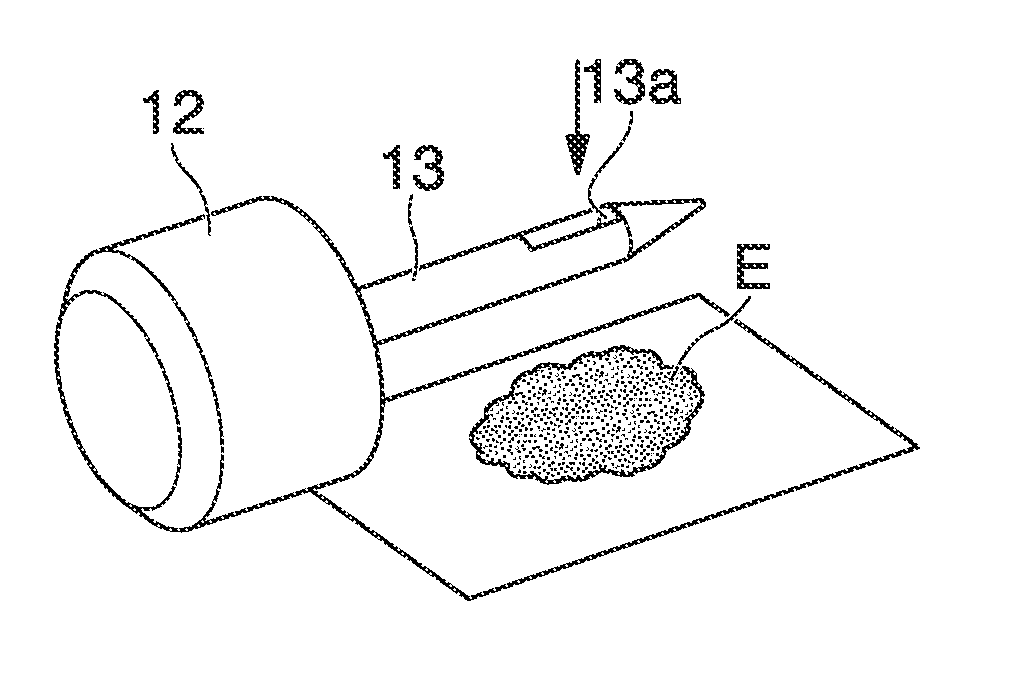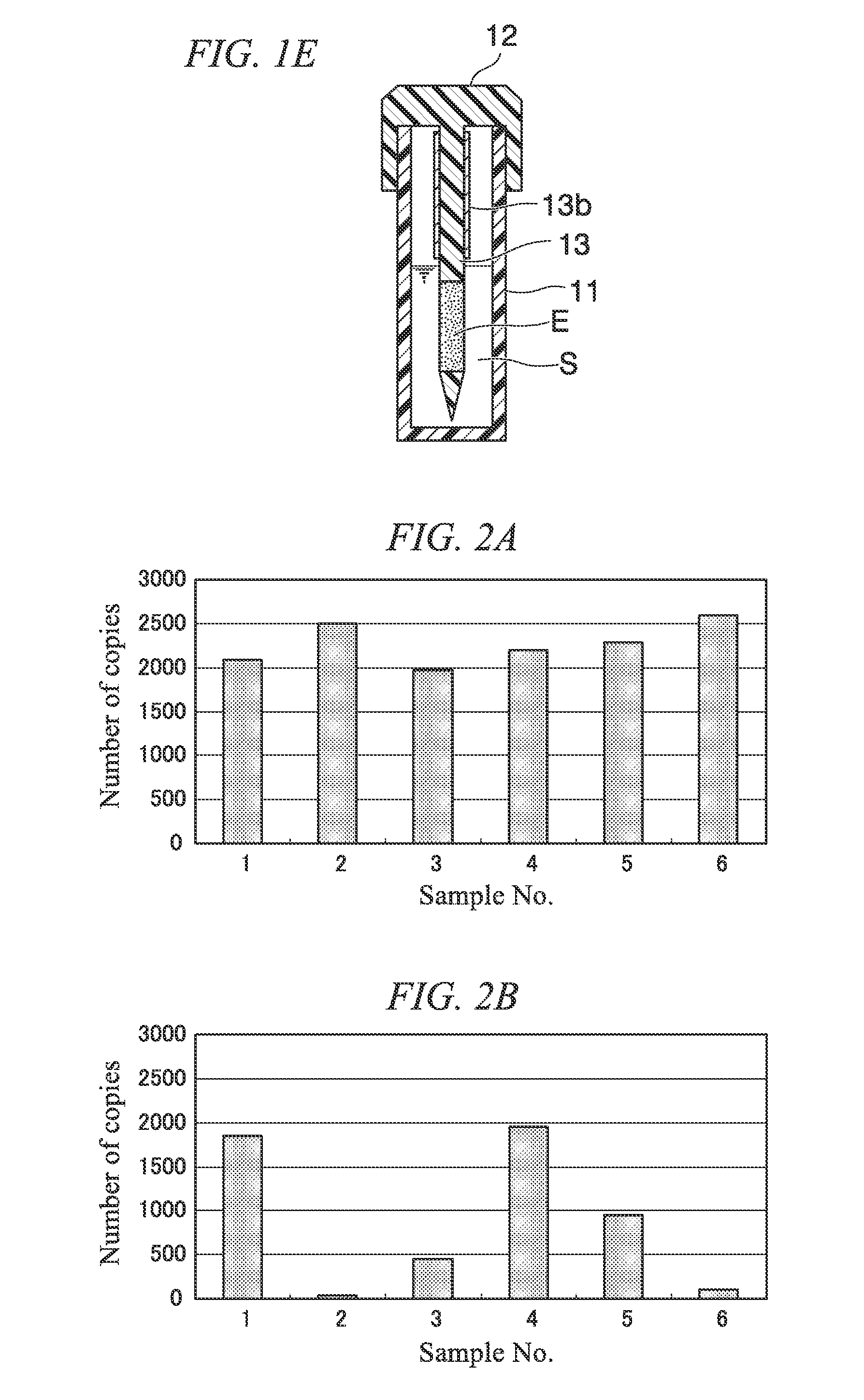Method for detection of target nucleic acid, and method for testing for colon cancer
- Summary
- Abstract
- Description
- Claims
- Application Information
AI Technical Summary
Benefits of technology
Problems solved by technology
Method used
Image
Examples
example 1
Application to the Expression Analysis of Colon Cancer-Related Gene: 1
[0113]Feces of a healthy subject was mixed well to be homogenized, which was then added with MKN45 cells so that 1×105 cells could be contained per gram of the fecal sample. This product was then mixed. Although MKN45 cells are derived from stomach cancer, they abundantly express the COX-2 gene similarly to colon cancer cells. Therefore, the thus mixed fecal sample was used as an artificial sample imitating feces collected from a colon cancer patient.
[0114]From the mixed fecal sample, 1 cm3 was respectively measured out per sample. In total, six samples were prepared. These were respectively placed in a 15 mL centrifugal tube (a product of Falcon) and preserved at 4° C. until the next step. The fecal samples were collected by using the sampling rod 13, that is, a sampling jig as illustrated in FIG. 1 (the sampling rod 13 integrally unified with the cap 12). The sampling rod 13 comprises a hole 13a capable of colle...
example 2
Application to the Expression Analysis of Colon Cancer-Related Gene: 2
[0121]Feces of a healthy subject was mixed well to be homogenized, 1 g of which was respectively weighed out per sample. In total, six samples were prepared. Five samples of these were respectively added with 1×102, 1×103, 1×104, 1×105, and 1×106 MKN45 cells and mixed well respectively. The remaining one sample was not added with MKN45 cells. These six samples were respectively suspended in 5 mL of a 70% ethanol solution filled in a 15 mL centrifugal tube (a product of Falcon).
[0122]The volume of the feces-origin solid content of each sample was measured by two types of measurement methods: the absorbance, and the height of a pellet of precipitated feces. Specifically speaking, the obtained suspension was left still at 25° C. for one day, and the absorbance of the supernatant thereof was measured with a wavelength of 450 nm. Then, this was centrifuged at 2,000×g for 10 minutes, and the height of the pellet of the ...
example 3
Application to the Expression Analysis of Colon Cancer-Related Gene: 3
[0128]Feces of a healthy subject was mixed well to be homogenized, roughly about 1 g of which was respectively weighed out per sample. In total, six samples were prepared. Five samples of these were respectively added with 1×102, 1×103, 1×104, 1×105, and 1×106 MKN45 cells and mixed well respectively. The remaining one sample was not added with MKN45 cells.
[0129]These six samples were respectively weighed, and suspended in 5 mL of a 70% ethanol solution similarly to with Example 2. Then, the absorbance and the height of a pellet were measured. With use of the correlation graph of FIG. 3, the volume of the solid content of each sample was estimated. Thereafter, additionally, in the same manner as that of Example 2, RNA was recovered from each sample in the form of 50 μL of an RNA solution, and the quantity of the recovered total RNA was determined by measuring the concentration of each RNA solution. Table 3 shows th...
PUM
| Property | Measurement | Unit |
|---|---|---|
| Volume | aaaaa | aaaaa |
| Volume | aaaaa | aaaaa |
| Volume | aaaaa | aaaaa |
Abstract
Description
Claims
Application Information
 Login to view more
Login to view more - R&D Engineer
- R&D Manager
- IP Professional
- Industry Leading Data Capabilities
- Powerful AI technology
- Patent DNA Extraction
Browse by: Latest US Patents, China's latest patents, Technical Efficacy Thesaurus, Application Domain, Technology Topic.
© 2024 PatSnap. All rights reserved.Legal|Privacy policy|Modern Slavery Act Transparency Statement|Sitemap



